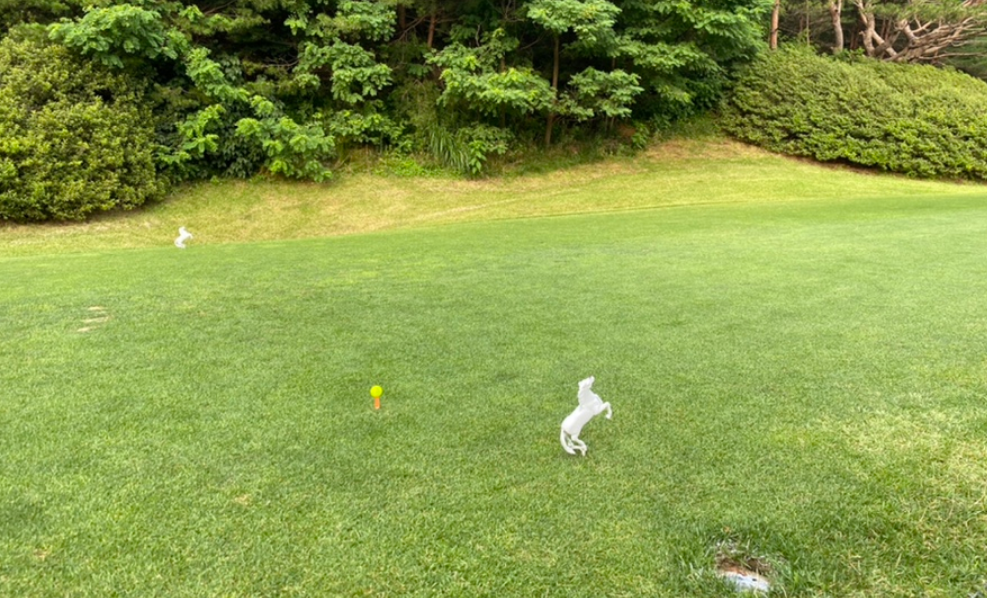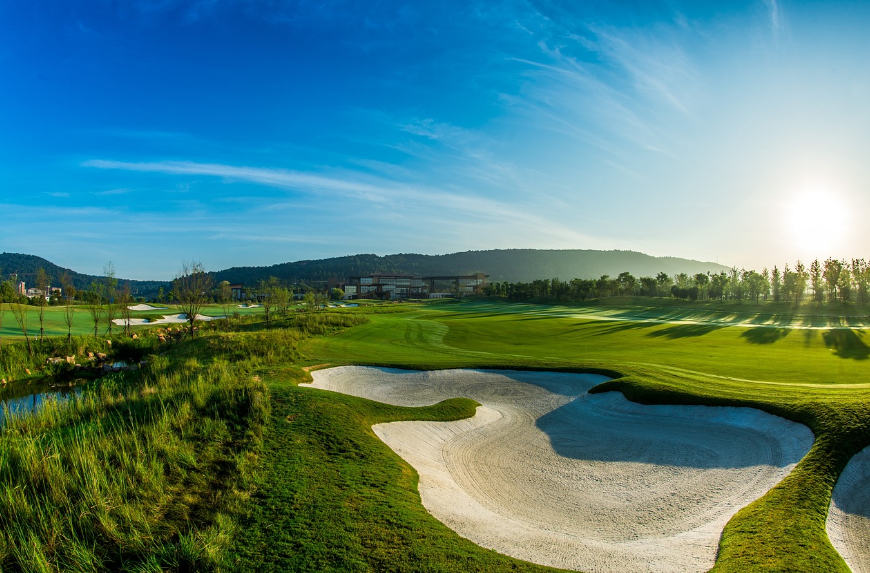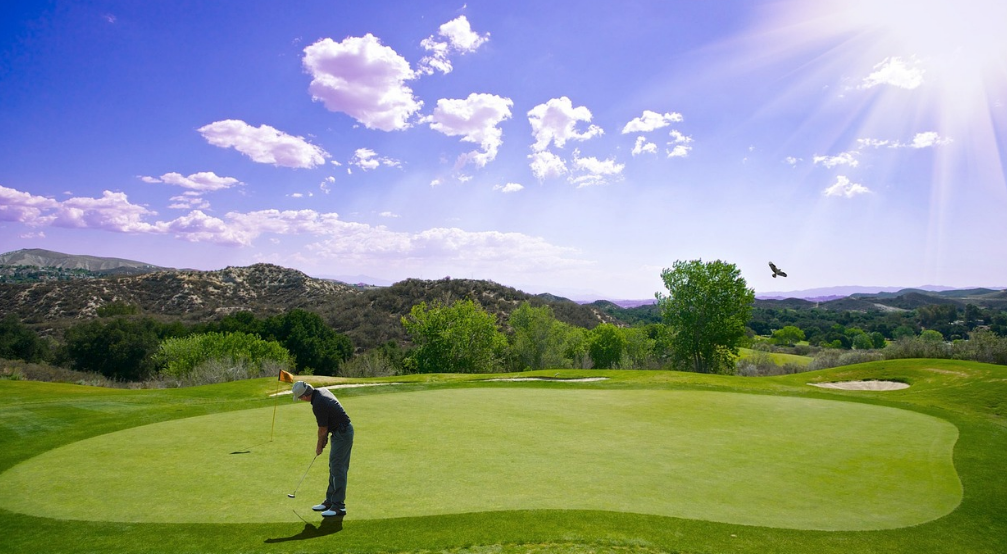INDEX
Golf Course Components
A golf course usually has 18 holes. For golf play, each hole has its own components, and let’s learn about them.
1. Teeing ground (Tee box)
It is the area where the golfer plays the first shot in each hole.
It is a flat place covered with a suitable length of grass as the starting point of the golf play, where the golfer puts the tee in, puts the ball on the tee, and takes a shot.
In the case of par 5 or par 4, a tee shot is taken with a driver, but in the case of par 3, it is also used with iron, and if necessary, a tee shot with a wood or driver is not necessarily set.

2. Fairway Grass
The area where the grass is well-established is the area where the ball falls if the golfer makes a relatively accurate shot. The size of the grass is an area where the golfer is cut enough to take a shot, and it is indispensable to be able to play on the fairway for a good performance.
3. Rough Grass
It is an area where grass is not fully trimmed. It is mainly located on both sides of the fairway, but it is an area that a golfer goes to when his shot is not accurate and is biased to the left and right.
The lawn is longer than the fairway, so it is difficult to take a shot, and it is a difficult area. In order to control the difficulty, the fairway may be narrowed and the rough may be lengthened.
4. Hazard area (Penalty Area)
It is an obstacle installed in the middle of the golf course, but recently, instead of this expression, the term “Penalty Area” has been officially changed, but the term “hazard” is also widely used because it is an old name.
It exists in various forms, such as rivers, lakes, forests, and drainage channels, in the middle or left and right of the golf course. Players can play without penalty if they can swing, but in areas where swing or shot is not possible, they can take a single shot from the length of a driver club in the drop zone or the rear of the area where the ball is located.
5. Bunker area
It is a place where sand is put in as an artificial obstacle. There is mainly a fairway bunker in the middle of the fairway, or a green bunker around the green.
Although it enters when the swing in the correct direction is not made, it also prevents it from entering the outbound or penalty area. This is because sand has less repulsive force, so no bound occurs, so the ball does not go far.

6. Water hazard area (Penalty Area)
It is a purposefully designed obstacle such as lakes and ponds within the course. Usually, golf courses have waterhazards everywhere, and there are lakes for aesthetics, but in terms of functionality, golf courses are often essential.
In golf courses, grass must be planted on fairways and roughs, but water is essential for grass vegetation.
Therefore, it is necessary to store water to water the grass, but most golf courses also use the water hazard to water the grass.

7. Green Apron area
Located between the fairway and the green, it is also called the mini fairway.
This place is wrapped like a band around the green, and the length of the grass is shorter than the fairway and longer than the green, and if there is a ball here, it cannot be officially called the green and the ball mark is not possible.
If you touch the ball, a penalty will be applied, so be careful.
8. Putting Green area
The hole is located in an area covered with very short and soft grass. In order to put the ball in, it must be put into a hole cup with a putter, which consists of a smooth lawn and a carefully designed slope to control the difficulty.
When the ball is placed on the green, it is called On Green. When it is on-green, the ball marker marks the position of the ball (back of the ball, to be precise with the pin), and the ball can be picked up and cleaned.
You can pick up a ball of on-green to clean the ball or check the putting line for accurate putting.

9. Out of Bounds area
The areas outside the official fairway and rough play area include the penalty area (hazard) and the out-of-bound area, which, unlike the naturally made penalty area, is an area that interferes with other teams’ play, that is, an area close to another hole.
Boundaries are usually marked with white stakes, but even if swings are possible in this area, they cannot swing and must receive two penalties. The player must return to the original position and take a shot.
Out-of-bound tees, hazard tees are usually given in amateur games, which are not a concept in professional games.
In case of out-of-bounds, he will receive two penalties and play his fourth shot in the designated Oti area, and if he enters the penalty area, he will receive one penalty and play his third shot.
These local rules vary from country to country.